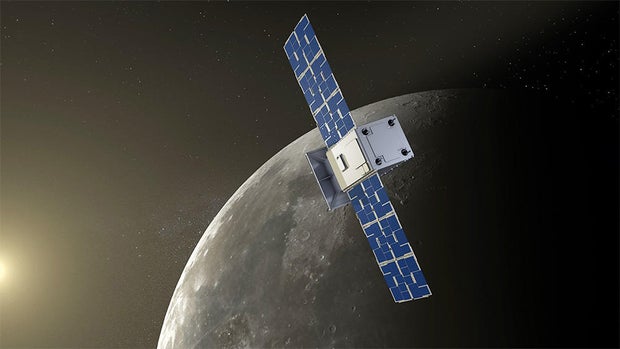Flight controller launched last week to test the anomalous lunar orbit planned by NASA's Artemis lunar plan. Lost contact with the small Pathfinder spacecraft. Authorities said on Tuesday. The engineer is troubleshooting and is trying to reestablish communication.
Launchedlast TuesdayRocket Lab from New Zealand On top of an electron rocket, the CAPSTONE spacecraft repeatedly "pumps" thrusters. To do so, it relied on a compact yet sophisticated upper tier. It raises the highest point of the increasingly elliptical orbit to a point where it may be released from the Earth's gravity and head toward the Moon.
These operations worked, and CAPSTONE, owned and operated by Advanced Space in Westminster, Colorado, flew on its own at the beginning of Monday when it was released from the top of Rocket Lab's Photon. The company has confirmed successful deployment of solar arrays, stabilization of spacecraft, and battery charging.

The 55-pound spacecraft turned to allow communication with flight controllers on Earth, and NASA's in Madrid, Spain. It started sending telemetry back through the Deep Space Network antenna. ..
The spacecraft test run went normally for the first 11 hours. However, on the second communication path, "an anomaly has occurred related to the communication subsystem," AdvancedSpace said on its website.
"The operations team is actively working on this issue in Deep Space Network and has determined the best next step."
Meanwhile, to the month of CAPSTONE The planned orbit correction operation to fine-tune the course was delayed, leaving the aircraft in its original "ballistic lunar movement" or BLT orbit. Tuesday's advanced space update, CAPSTONE, was about 174,000 miles from Earth.
"One of the benefits of BLT, a designed trajectory, is its robustness against such delays," the company said in a web update. .. (Orbit) and system margins provide time to resolve and understand this anomaly before proceeding to the first orbit correction operation.
CAPSTONE was launched to act as a pathfinder for NASA's planned gateway lunar space station, testing the anomalous lunar orbit that is essential to NASA's Artemis lunar program.
Microwave-sized CAPSTONE has the potential to measure the radiative environment in deep space and pinpoint the exact location of a spacecraft that orbits months without relying on Earth-based tracking. It is also designed to test the technology.
The ballistic lunar orbit is more than 800,000 miles from Earth (more than three times the distance of 240,000 miles between Earth and the Moon) before reaching a point where it can slip in mid-November. Carry. Planned "near a straight halo orbit" or NRHO around the lunar pole.
However, communication is essential and the spacecraft needs to regain contact in order to carry out its mission.
"If something goes wrong (in the CAPSTONE mission), we have a complete plan to move forward with the gateway and all Artemis missions using NRHO," said the exploration mission director. Nujoud Merancy said. The Johnson Space Center planning office said before the launch.
"This data is really worth it ... but you don't have to continue," she added. That said, "It's always good to get more data and improve modeling, but I'm completely confident in the data that occurs with either method."
CAPSTONE's mission costs about $ 30 million, NASA said: $ 20 million for spacecraft, its development and operation, and another $ 10 million for Electron launcher.

Bill Harwood has been in charge of the US space program full-time since 1984. He was initially the Cape Canaveral bureau chief of United Press International and is now CBS News. He covered 129 Space Shuttle missions, all interplanetary flights since Voyager 2's flyby, and numerous commercial and military launches. Based in the Kennedy Space Center in Florida, Harwood is an avid amateur astronomy scholar and co-author of "Comm Check: The Final Flight of Shuttle Columbia."
Thank you for reading CBS NEWS.
Create a free account or log in to
to take advantage of other features.


